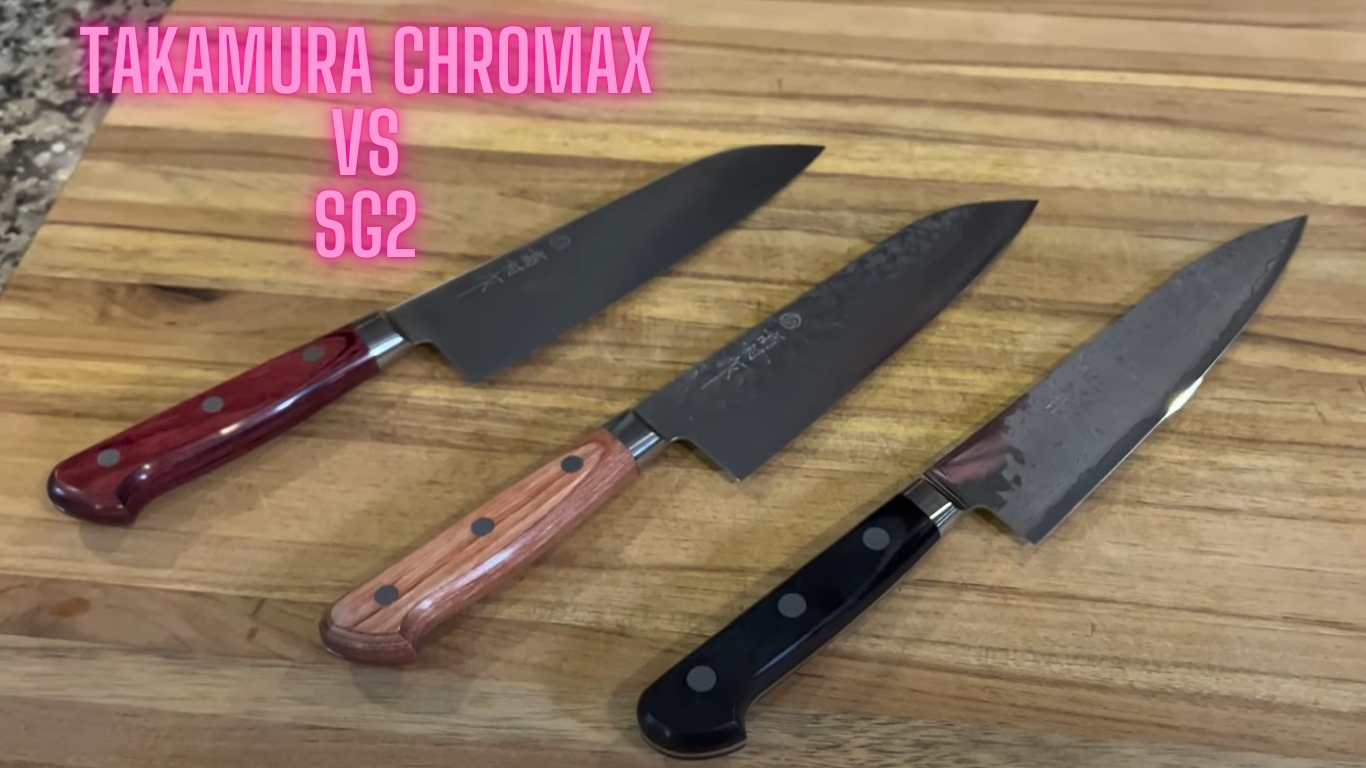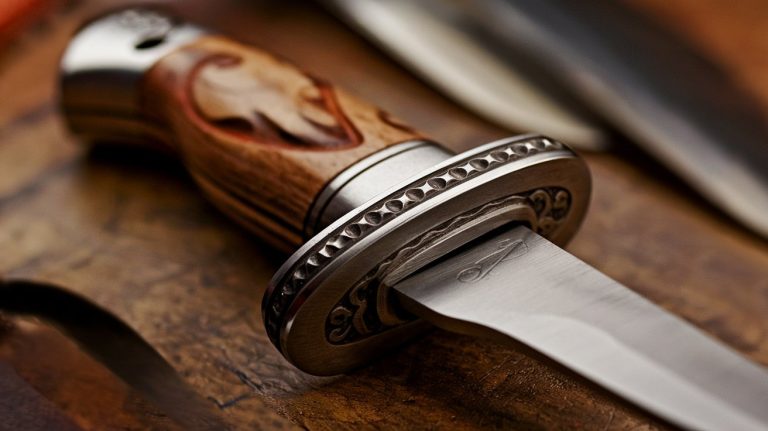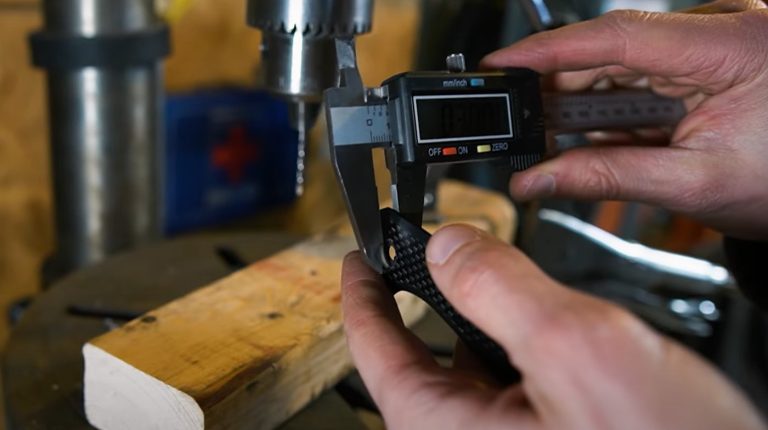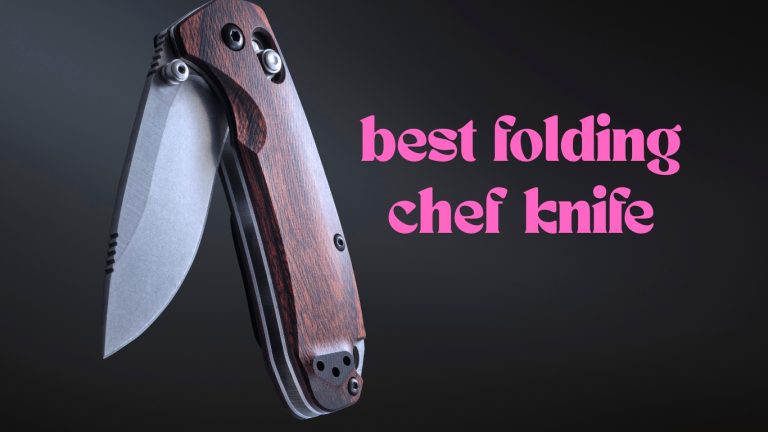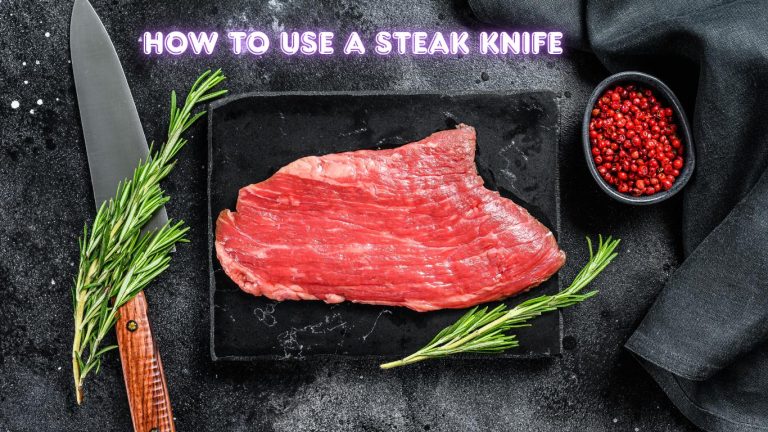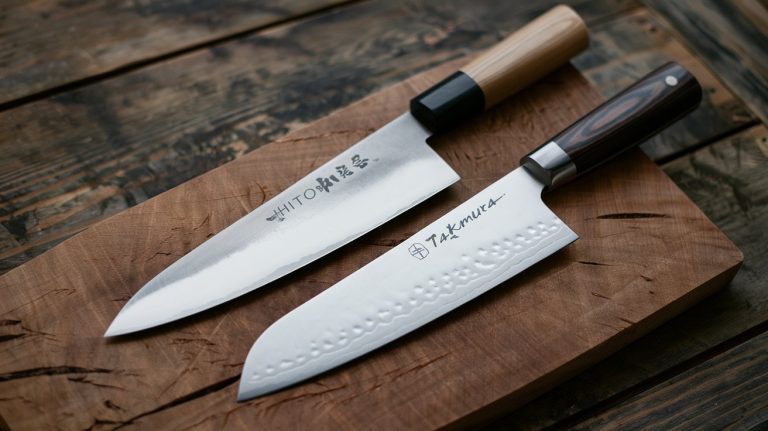Takamura Chromax vs SG2: Finding the Perfect Cut for Your Kitchen
When choosing between Takamura Chromax and SG2 steel, consider your culinary needs. Chromax offers excellent edge retention with a semi-stainless design, while SG2 shines with superior sharpness and durability.
You’ll appreciate Chromax for its ease of maintenance and substantial feel. On the other hand, SG2’s advanced materials bring a bit more finesse for precise cuts.
Each knife caters to different preferences, so there’s more to discover to help you make an informed decision.
Key Takeaways
- Takamura Chromax features a hardness of 64-65 HRC, offering good edge retention and easier sharpening compared to SG2’s 62-64 HRC.
- SG2 steel boasts superior edge retention due to its advanced manufacturing process, making it favored by users for long-lasting sharpness.
- Chromax is semi-stainless with a 5% chromium content, providing better rust protection than SG2, which has higher carbon content and requires more maintenance.
- Both knives excel in kitchen tasks, with Chromax suitable for high-volume prep and SG2 designed for effortless slicing and minimal fatigue.
- Prices for both knives start around $200, with SG2 slightly higher due to its advanced materials and manufacturing processes.
Overview of Takamura Chromax
When you immerse yourself in the world of Takamura Chromax, you’ll discover a remarkable blend of performance and craftsmanship that sets these knives apart.
Crafted with a composition of 5% chromium and 1% carbon, these blades achieve a hardness of HRC 64-65 for outstanding edge retention. Their semi-stainless nature reduces reactivity, although you should dry them after use to prevent rust.
This balance of materials allows for superior edge retention, making them a great choice for both professional and home cooks.
The San Mai or hammer-forged construction, combined with a striking Tsuchime finish, not only enhances durability but also gives each knife a unique aesthetic. Each Takamura Chromax knife is designed with a 130mm edge length, making it an ideal tool for precision cuts in any kitchen setting.
The San Mai construction and stunning Tsuchime finish not only boost durability but also create a visually striking knife.
Ideal for all-purpose kitchen tasks, they’re razor-sharp and easy to maintain, making them a fantastic choice for any chef seeking quality without breaking the bank.
Overview of SG2 Steel
SG2 steel is a marvel of modern metallurgy, renowned for its exceptional performance in high-end kitchen knives. Its unique properties stem from a carefully balanced chemical composition and advanced manufacturing techniques.
Here’s what makes SG2 stand out:
- High Carbon Content: With 1.25-1.45% carbon, it enhances hardness and cutting performance.
- Corrosion Resistance: A chromium content of 14-16% guarantees durability in humid environments.
- Toughness: Molybdenum and vanadium improve strength and resistance to chipping.
- Fine Grain Structure: Powder metallurgy creates a uniform, fine grain for superior edge retention.
- High Hardness: SG2 achieves a remarkable hardness of 62-64 HRC, ensuring that it maintains a sharp edge effectively.
Hardness and Edge Retention Comparison
While both Takamura Chromax and SG2 steel offer impressive hardness levels, their unique compositions lead to distinct differences in edge retention. Chromax, with a Rockwell hardness of 64-65 HRC, has a notable carbon content and includes molybdenum and vanadium.
On the other hand, SG2 ranges from 62-64 HRC and is recognized for its edge-holding ability, though it can be trickier to sharpen. This is particularly relevant when considering that Chromax is more reactive than typical semi-stainless knives.
| Steel Type | Hardness (HRC) | Edge Retention |
|---|---|---|
| Takamura Chromax | 64-65 | Good, less demanding |
| SG2 | 62-64 | Excellent, prone to micro chipping |
| Comparison Basis | Carbon Content | Sharpening Difficulty |
Corrosion Resistance Analysis
Although both Takamura Chromax and SG2 are excellent choices for knives, their corrosion resistance varies considerably due to their distinct compositions.
- Chromium Content: Chromax, with 5% chromium, offers better protection against rust compared to SG2, which has minimal chromium.
- Reactivity: SG2’s high carbon content makes it more reactive, leading to increased rust risk, especially with acidic foods.
- Patina vs. Rust: Chromax develops a patina over time, enhancing its character without harming performance, while SG2 can rust if not cared for.
- Maintenance Needs: Both require regular washing and thorough drying, but Chromax is generally less demanding due to its semi-stainless nature. The blade of the Takamura Chromax features a San-mai lamination technique that enhances its durability and protects the core steel.
Performance in Kitchen Tasks
When it comes to performance in kitchen tasks, the right knife can make all the difference. With SG2 knives, you’ll experience exceptional edge retention and sharpness right out of the box.
Their thin profile allows for effortless slicing through soft products, making precise cuts on vegetables like chives a breeze. You’ll appreciate the lightweight and balanced design that minimizes fatigue during long prep sessions.
While food release isn’t as prominent as with Chromax, SG2’s gentle belly provides good rocker performance for chopping. This knife excels in high-volume prep work, making it a fantastic choice for home cooks and professionals alike.
Additionally, the SG2 (R2) Powdered Stainless Steel construction contributes to its exceptional edge retention, ensuring that you can rely on it for extensive use without frequent sharpening.
Durability and Toughness Evaluation
As you consider the durability and toughness of kitchen knives, you’ll find that the Takamura Chromax and SG2 steel options present distinct advantages and challenges.
Here’s a quick comparison for you:
- Chipping Resistance: Chromax is less prone to chipping compared to SG2, which may experience micro chipping.
- Material Composition: SG2 is a powdered stainless steel known for sharpness but isn’t as durable. Additionally, users have reported that initial chipping may decrease with proper usage and care practices. Furthermore, Japanese knives utilize harder steels than Western knives, enhancing performance.
- Blade Thickness: Chromax blades are generally thicker, enhancing their resilience for heavy-duty tasks.
- Patina Development: While Chromax develops a patina, it resists rust and maintains durability over time.
Sharpening and Maintenance Requirements
Understanding the sharpening and maintenance requirements of your kitchen knives is key to keeping them in ideal condition.
Chromax, with a hardness of 64-65 HRC, is relatively easy to sharpen using Arkansas stones or waterstones. You’ll appreciate how quickly it can regain its edge, though it may need more frequent touch-ups.
Additionally, user experiences suggest that Chromax can achieve exceptional sharpness quite effortlessly. Regular visual inspections help maintain performance and ensure safety.
On the other hand, SG2, at 62-64 HRC, requires a bit more effort due to its high hardness. A progression from coarse to fine stones is essential for achieving maximum sharpness. While SG2 maintains its edge longer, be mindful that it demands consistent maintenance.
Both steels can be cleaned with mild soap and water, but Chromax benefits from drying to prevent patina.
Price and Value Considerations
Price and value considerations play a crucial role in selecting between Takamura’s Chromax and SG2 knives. Here are some key factors to keep in mind:
- Price Range: Chromax generally starts around $200, while SG2 varies from $200 to $230.
- Material Costs: SG2’s advanced manufacturing process makes it pricier than Chromax, which still offers solid performance. Notably, R2 offers a unique experience for those who haven’t used a laser knife.
- Value for Money: Both knives deliver high performance, but SG2 is often favored for its superior edge retention.
- Handle Quality: The choice of materials, like Pakka wood, can greatly impact the overall price and value.
User Experience and Feedback
When you pick up a Takamura Chromax, you’ll notice its substantial feel, which many users appreciate for its solid grip and control. Conversely, SG2 knives shine with their lightweight design, making them perfect for precision tasks without causing fatigue.
Let’s explore what chefs and home cooks alike are saying about these two steel types regarding performance and personal preference. Users have noted that SG2 offers superior edge retention, making it a preferred choice for those seeking long-lasting sharpness in their knives.
User Preferences for Chromax
While many users rave about the Takamura Chromax, their preferences often highlight key aspects that shape their overall experience.
You’ll find that these features greatly impact satisfaction:
- Edge Retention: Users appreciate how well it holds its edge, rivaling premium knives.
- Sharpness: The ease of sharpening is a common favorite, allowing you to achieve a keen edge quickly. Additionally, users report that the knife’s ability to maintain sharpness requires minimal effort.
- Handle Comfort: While some find the handle small, those who prefer a pinch grip often enjoy it.
- Value: Many consider Chromax an excellent value, packing impressive performance into an affordable price.
Performance Insights of SG2
SG2’s performance insights provide healthcare organizations with a powerful toolset for enhancing service delivery and optimizing patient care. Utilizing Sg2 Analytics, you can analyze utilization trends and forecast changes in healthcare demand, ensuring you’re always prepared.
The Share of Care solution gives you a detailed view of local market dynamics, helping you identify competitors and growth opportunities. Additionally, the Organization Performance module prioritizes improvement areas, driving sustainable growth and market relevance.
By integrating technology and operational solutions, like AI tools and remote patient monitoring, you can enhance patient management.
Ultimately, Sg2’s analytics empower you with extensive data that drives strategic planning and fosters efficient resource allocation, leading to improved overall performance in care delivery.
This solution provides visibility into clinical activity across all care sites, allowing for more informed decision-making in a rapidly evolving healthcare landscape.
Frequently Asked Questions
How Do Takamura Chromax and SG2 Compare in Terms of Weight?
When you compare weight, you’ll notice that lighter knives like Takamura Chromax make precise tasks easier, allowing for nimble movements.
In contrast, SG2 knives, although slightly heavier, offer stability and balance that can enhance control during tougher cuts.
The weight distribution in each knife affects how they feel in your hand, so choosing the right one depends on your cooking style and preferences for maneuverability versus stability.
Are There Specific Brands Known for High-Quality SG2 Knives?
When you’re searching for high-quality SG2 knives, several brands stand out.
Takamura is renowned for its craftsmanship, especially in Gyuto and Santoku models.
Makoto offers excellent balance and feel, often preferred by many users.
Miyabi focuses on aesthetics with its beautifully hammered finishes, while Senzo emphasizes cutting performance and edge retention.
Finally, Yu Kurosaki is celebrated for its unique grinds and overall knife performance, making any of these brands a fantastic choice!
Can Takamura Chromax Be Used on Ceramic Surfaces?
You shouldn’t use Takamura Chromax knives on ceramic surfaces.
These blades are designed for precision cutting, and using them on hard materials like ceramic can dull the edge quickly.
While Chromax offers great sharpness and ease of sharpening, the risk of chipping or damaging the blade increases on such surfaces.
It’s best to reserve your Chromax for softer foods to maintain its performance and prolong its lifespan.
Keep it sharp and safe!
What Is the Ideal Cutting Board Material for Both Steels?
Did you know that wooden cutting boards can reduce knife dulling by up to 50% compared to plastic?
For both steels, opt for wooden boards made from softwoods like cedar or cypress. They provide a gentle surface that maintains your knife’s edge while offering an eco-friendly choice.
Bamboo boards are also great, being scratch-resistant and sustainable.
Avoid glass or stone, as they can quickly dull your knives, leading to frustrating kitchen experiences.
How Do Environmental Factors Affect the Performance of These Steels?
Environmental factors greatly impact the performance of your steel knives. Temperature fluctuations won’t compromise their integrity, but humidity can cause Chromax to develop a patina, requiring careful cleaning to prevent rust.
On the other hand, stainless steels like SG2 resist corrosion better and need less maintenance. Handling acidic or salty foods means you’ll need to clean both types after use, ensuring they remain sharp and effective for your kitchen tasks.
Cut Above the Rest: Making the Right Decision
In comparing Takamura Chromax and SG2 steel, it’s clear each has its strengths. Did you know that knives made with SG2 can maintain their edge up to 2-3 times longer than those with standard stainless steel?
This means less time sharpening and more time enjoying your culinary creations.
Ultimately, whether you prioritize edge retention or versatility, both options offer exceptional performance and craftsmanship. Choose the one that fits your cooking style, and you won’t be disappointed.

